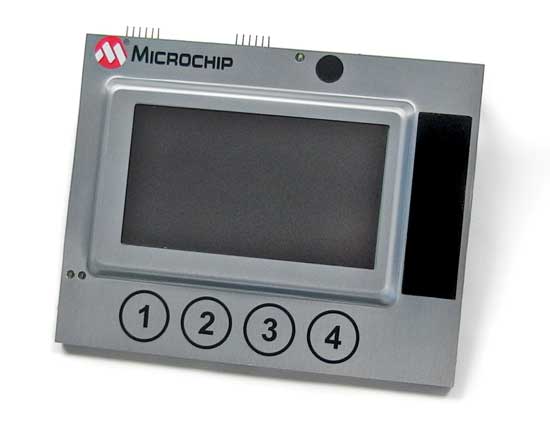Inductive Touch Technology and Aluminum Overlays
Touch Sensing Technology
The options for decorating metal trim used in inductive touch technology are limited only by imagination. Inductive technology offers a clean smooth surface uninterrupted by protruding buttons. This is because the technology allows sensing through most materials including aluminum.
Aluminum trim is an authentic material which can be decorated using any combination of brushing, printing, texture and forming. An extensive library of patterns is available to be integrated into the trim. Logos can be included two dimensionally or embossed for a 3-D effect. An aluminum touch control for products ranging from refrigerators to laptops and automotive to electronics is now a reality. Explore the possibilities of aluminum trim.

Inductive touch sensors require a layered construction. The front panel or overlay is the top layer of the construction. Aluminum is the most versatile option for this layer since it offers a wide variety of decorative and functional options. It is an excellent candidate for inductive touch because it has a low resistivity and does not increase the inductance. It allows deflection relative to the underlying coil. A spacer is required between the front panel and printed circuit board. This layer is typically polycarbonate with adhesive on both sides for bonding to the front panel and circuit board.
Front Panel
Conductive Substrates
Aluminum or Stainless Steel
Non-conductive Substrates
Polycarbonate
Conductive Target Layer
This layer is only required if a non-conductive substrate is used as the front panel. Typically this layer will be aluminum laminated with adhesive.
Spacer
The spacer provides a separation between the conductive target and coil windings allowing for deflection. Holes are located in the spacer above each coil on the printed circuit board. The holes are pierced for both metal and plastic options and adhesive is used to apply the spacer to the front panel. Alternatively, the use of in-mold creates the required holes during the molding process in addition to attachment features.Plastic
ABS, Acrylic, Polycarbonate, Polyester, VinylMetal
Aluminum, Stainless Steel, Cold Rolled Steel
In-Molded Plastic
Acrylic, Glass Filled Nylon, Polycarbonate
Adhesive
A wide range of adhesives are available to meet specific environmental and bonding requirements.Pressure Sensitive
Heat Activated
Subscribe to Nameplate Blog
- 2021 (1)
- 3D (4)
- Adhesives (11)
- Aluminum (129)
- Aluminum In-mold (9)
- Aluminum Trim (41)
- Anodize (4)
- Appliance (12)
- Appliqué (5)
- Archive (35)
- Artwork Submission (4)
- Assembly (6)
- Automotive (35)
- Backlit (5)
- Boats (6)
- Brass (8)
- Brushed Aluminum (19)
- Carbon Fiber (2)
- Classic (1)
- Coined (5)
- Color Development (25)
- Computers (13)
- Cosmetics (24)
- Custom Patterns (11)
- Customization (16)
- Customized Patterns on Aluminum (2)
- Debossing (13)
- Diamond Cut (22)
- Digital Printing (2)
- ebook (4)
- Electronics (23)
- Embossing (53)
- Etched (20)
- Exterior (9)
- FAQ (29)
- Faux Finish (1)
- Faux Finishes (7)
- Favorite Nameplate (20)
- Furniture (9)
- Gauges (5)
- Gloss (4)
- Hang Tag (1)
- IDSA (1)
- In-mold Decoration (5)
- Individual Letters (7)
- Inlay (1)
- Key Fob (1)
- Labels (10)
- Large Vehicle (4)
- Laser Etch (2)
- Lithography (3)
- Match Box Cover (6)
- Materials and Processes (118)
- Mechanical Finishes (51)
- Medical Equipment (10)
- Metallic (8)
- Motorcycle (11)
- Nameplate (175)
- Nameplate Examples (54)
- Nameplate Tools (7)
- Outdoor Equipment (4)
- Overlay (7)
- Packaging (15)
- Patina Finish (3)
- Plastic (1)
- Plastic Trim (3)
- Point of Purchase (8)
- Polycarbonate (10)
- Process Color (16)
- Promotional Products (38)
- Prototypes (2)
- Recreational Vehicles (6)
- Resources (11)
- Safety Labels (2)
- Selective Patterns (10)
- Sill Plate (6)
- Sports Equipment (9)
- Stainless Steel (17)
- stock dies (10)
- Surfaces (4)
- Sustainability (1)
- Technical (1)
- Telecommunications (9)
- Testing (3)
- Texture (15)
- Top 10 (9)
- Woodgrain (2)





